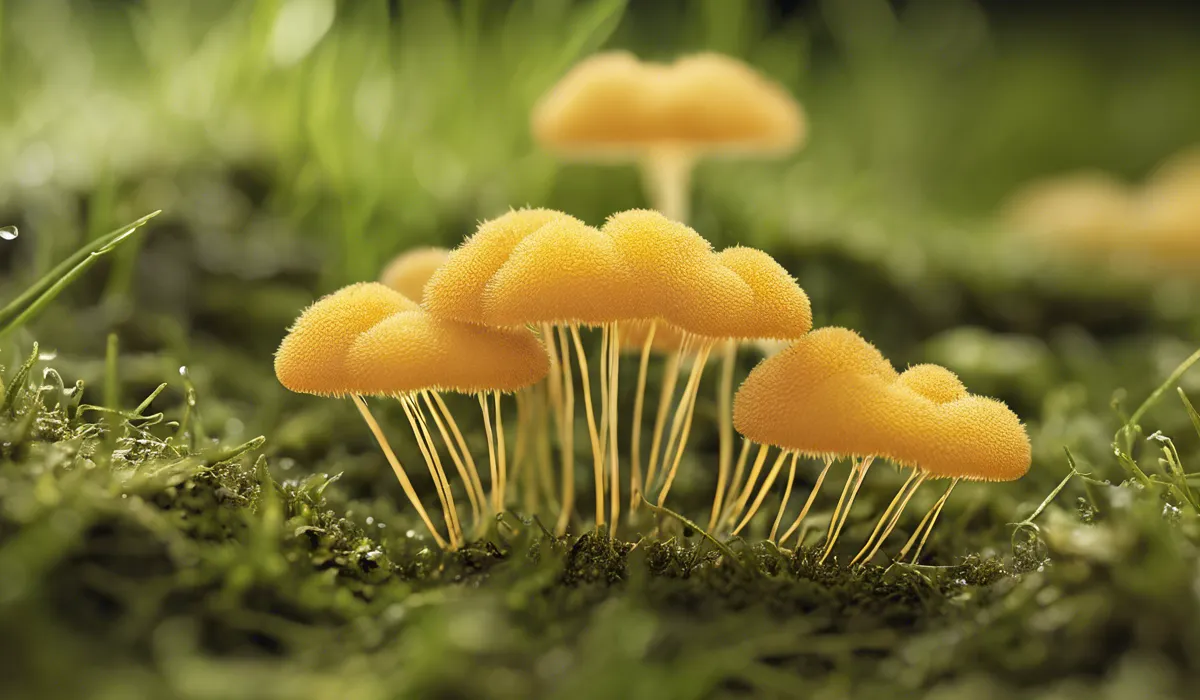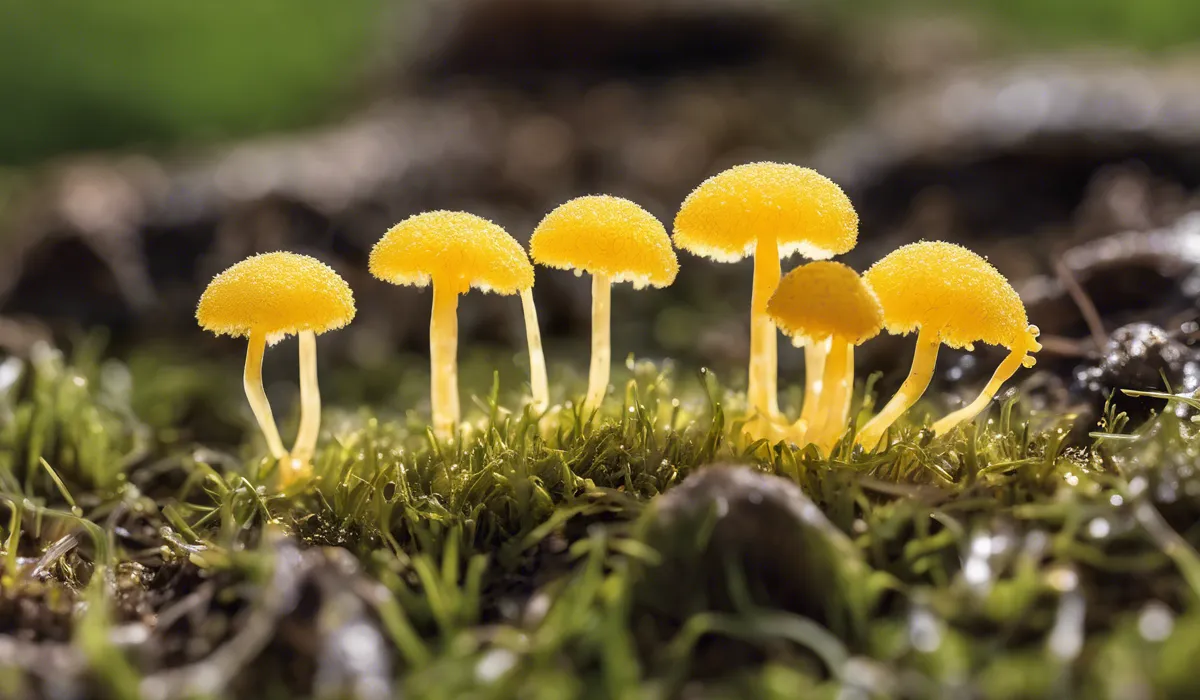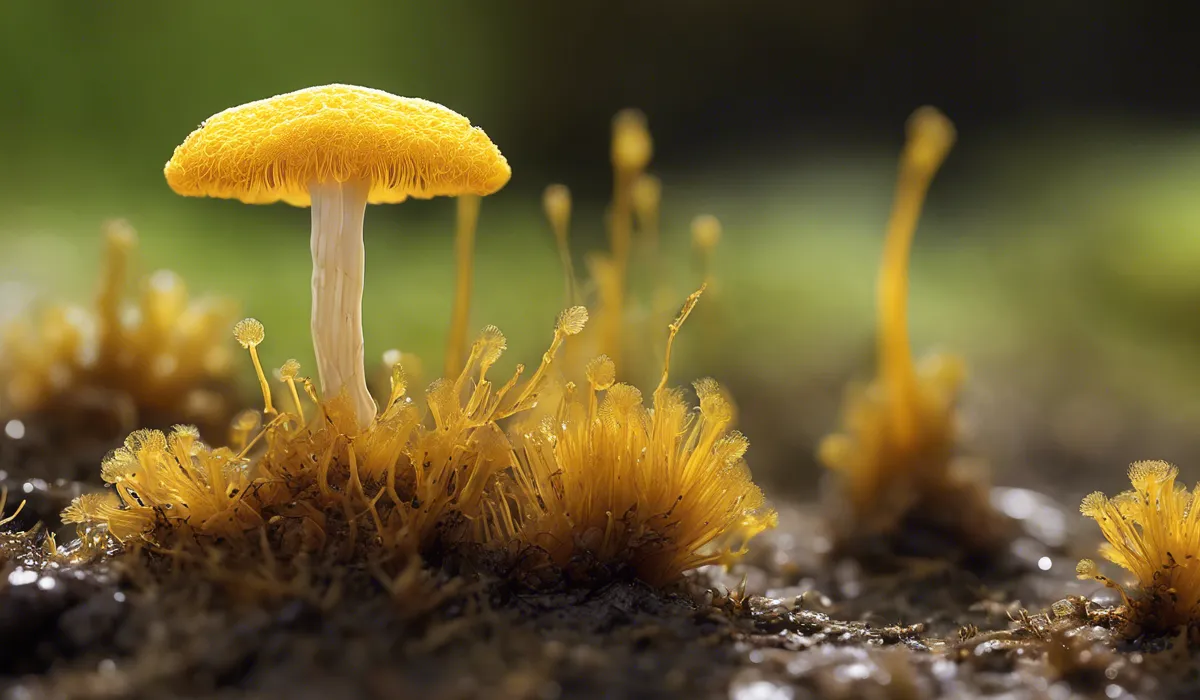Slime mold on grass is a benign, fungus-like organism that thrives in moist environments.
It forms colorful, jelly-like patches that feed on bacteria and decaying organic matter. Though unsightly, it’s harmless to grass and typically disappears with drier conditions.
Understanding Slime Mold on Grass

Definition of Slime Mold
Slime mold is a unique organism that shares characteristics with fungi, but it’s not a true fungus. It is often found on lawns, especially when the conditions are damp.
This organism forms colorful, jelly-like structures which are part of its reproductive phase.
Although it may look alarming, slime mold is mostly harmless and feeds on bacteria and decaying organic matter.
Different Types of Slime Mold Found on Grass
There are several types of slime mold that might appear on your lawn. The most common is the Physarum cinereum, which typically appears as a grayish slime.
Others, such as Fuligo septica, can be bright yellow and are often referred to as “dog vomit” slime mold due to their appearance.
Biology of Slime Mold
Slime molds have an interesting life cycle that begins with spore germination. The spores develop into single-celled organisms that can join together to form a multicellular structure.
This mass can move in search of food, and when it finds a suitable spot, it forms the fruiting body that releases spores, starting the cycle anew.
Common Conditions That Contribute to the Development of Slime Mold on Lawns
Slime mold thrives in moist environments. Overwatering, heavy rains, and poor drainage can all create the conditions slime mold loves.
Thick thatch layers and an abundance of organic material can also contribute to the development of this organism on your grass.
Impact of Slime Mold on Lawn Health

Physical Effects of Slime Mold on Grass Blades
Slime mold uses grass as a support structure but does not feed on it or cause it harm.
The grass blades might be covered temporarily, which can interfere with photosynthesis, but once the slime mold has completed its life cycle, the grass typically recovers quickly.
Myths and Truths About the Harmfulness of Slime Mold
Despite its unsettling appearance, slime mold is not harmful to your lawn. Myths suggest that it can kill grass or cause diseases, but the truth is that it’s a benign presence that feeds on dead organic matter, not living plants.
Slime Mold as an Indicator of Lawn Health or Underlying Issues
If slime mold frequently appears on your lawn, it could be a sign that you’re overwatering or that your lawn has poor drainage.
It’s a good indicator that there might be too much organic matter on the surface of the soil, suggesting that dethatching or aeration could be beneficial.
Long-term Effects, If Any, on the Grass and Soil
In the long term, slime mold has no adverse effects on grass or soil. It’s part of the ecosystem that helps break down organic material, contributing to the nutrient cycle within your lawn’s environment.
Management and Prevention of Slime Mold

Natural Remedies and Cultural Practices to Manage Slime Mold
Management of slime mold is straightforward. You can use a rake to break up the structures or simply let them disappear on their own.
Ensuring proper lawn care practices, like aeration and dethatching, will improve air circulation and reduce moisture, making your lawn less inviting for slime mold.
Chemical Options: Pros and Cons
While chemical treatments are available, they are generally not recommended for controlling slime mold.
Chemicals can disrupt the natural balance of your lawn’s ecosystem and may not be effective since slime mold is not a true fungus.
Lawn Care Tips to Prevent the Recurrence of Slime Mold
Maintaining a healthy lawn is the best prevention. Water your lawn deeply but infrequently to encourage strong roots and avoid excessive moisture on the surface.
Regularly removing thatch and aerating the soil will also discourage slime mold growth.
When to Seek Professional Help for Slime Mold Management
If you’re consistently battling slime mold and adjustments to your lawn care routine aren’t helping, it may be time to seek professional advice.
A lawn care expert can analyze your specific situation and recommend tailored solutions.
FAQs About Slime Mold on Grass
What is slime mold on grass?
Slime mold on grass is a non-harmful, fungus-like organism that appears as colorful, jelly-like patches on the lawn, feeding on bacteria and decaying organic materials in moist conditions.
Is slime mold dangerous to grass or humans?
No, slime mold is not dangerous to grass or humans; it is an environmentally beneficial organism that helps decompose organic matter without damaging the lawn.
How does slime mold on grass look?
Slime mold on grass can appear in various colors, often forming colorful, jelly-like patches that can be unsightly but are not harmful to the grass.
What causes slime mold to grow on grass?
Slime mold typically grows on grass due to excess moisture and the presence of decaying organic matter, which provide the ideal conditions for its development.
How can I get rid of slime mold on my lawn?
Slime mold usually disappears on its own as conditions dry out, but it can be removed by raking or mowing the affected area, or simply by allowing the grass to dry.
Final Thoughts
Slime mold on grass is a non-harmful, fungus-like organism that prospers in wet conditions.
It appears as colorful, jelly-like formations, consuming bacteria and decaying matter. While it may not be aesthetically pleasing, slime mold poses no threat to grass health and usually vanishes once the environment becomes less moist.
